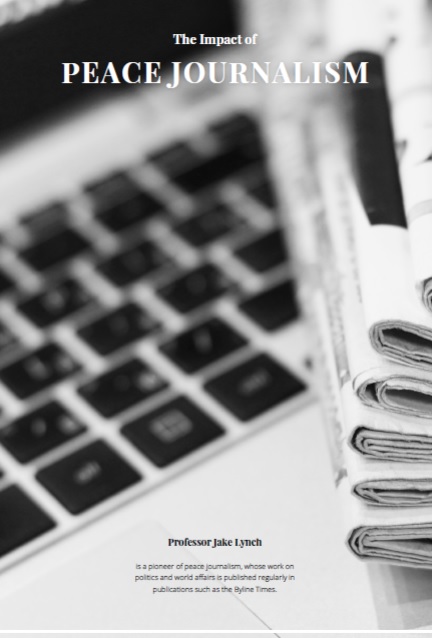To understand what peace journalism entails, one must start with a quick understanding of the concept of peace. Conventionally, peace is seen as the opposite of conflict. But conflict is a relationship, between two or more parties, with incompatible goals. What is at stake is how they respond to the conflict. Peace can be defined as the absence of violence, or the application of nonviolent methods and interventions in response to conflict. Peace journalism builds on this insight. According to the book Peace Journalism by Annabel McGoldrick and Professor Jake Lynch, it is defined as a form of journalism that studies the root causes of conflict to provide society with opportunities to consider and value non-violent responses to it.
Jake Lynch is an Associate Professor in the Department of Peace and Conflict Studies at the University of Sydney. An accomplished academic and experienced journalist, Professor Lynch has pioneered research on the topic of peace journalism, publishing books and giving keynote lectures on the topic.
In Peace Journalism, the authors continue their definition to include a note on how this form of journalism uses the results of conflict analysis to update the concepts of accuracy, balance and fairness in reporting. For journalists in the field, peace journalism acknowledges the connections between them, their sources, the stories they report on, and the consequences of their work.
In Practice
Thanks to the efforts of Professor Lynch and his peers, peace journalism is widely acknowledged and practised in the field of journalism. In practice, journalists who adhere to its principles will seek to provide a more balanced perspective when reporting on conflict and war. This perspective will include the realities from both sides, and even dig deeper to uncover the less visible causes of the conflict and its cost to communities. All this is done without dehumanising the enemy, while also looking to uncover areas of agreement between the conflicting parties.
With peace journalism, readers and audiences have a say on how to respond. This is important, because as Professor Lynch puts it, if audiences decide they still prefer war to peace, it’s their decision; there’s nothing more that journalism can do. He points out that peace journalism offers a more realistic story, one with background and context. A story without these aspects is misrepresented, as any conflict at its root is about parties in a relationship setting and pursuing incompatible goals.
Furthermore, peace journalism seeks the truth, which is something reporters should do. However, this form of journalism aims to press reporters on how they come across the facts and how they engage with them. It’s a process that focuses on helping the journalism community to ask more questions about their readings and to inspect any self-serving external representations and propaganda.


